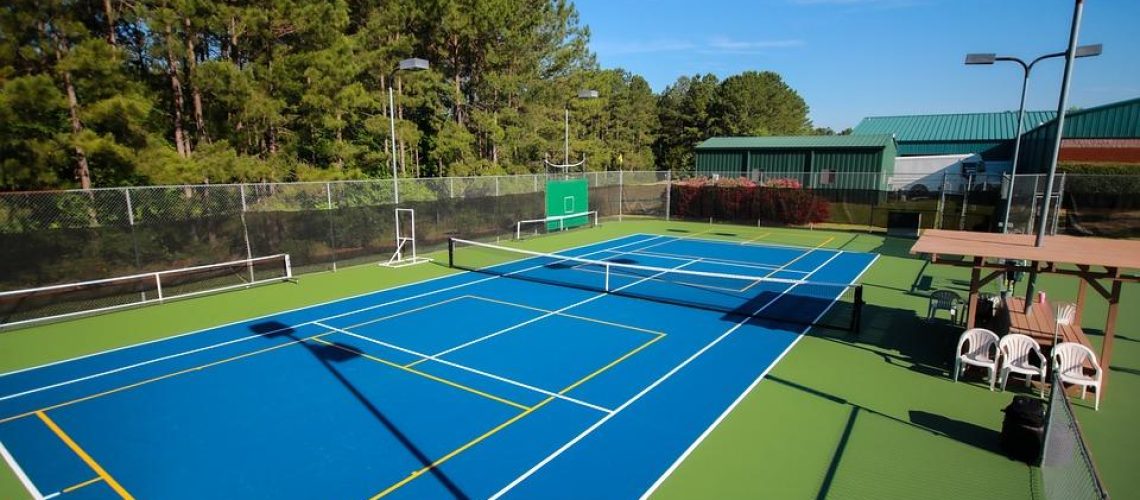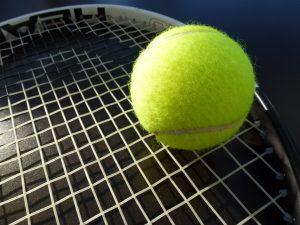We may earn money or products from the companies mentioned in this post.
Introduction

Have you ever found yourself with a pair of tennis shoes that just don’t fit quite right? Perhaps they stretched out over time or maybe you made the unfortunate mistake of purchasing the wrong size Whatever the case may be, it’s important to address this issue as ill-fitting shoes can hinder both your performance and comfort on the court In this article, we’ll explore the need to shrink tennis shoes, discuss why proper shoe fit is crucial, and delve into various methods available to achieve that perfect fit
The Need to Shrink Tennis Shoes
Tennis shoes are designed to provide support and stability during intense physical activity However, over time, these shoes can stretch out due to wear and tear As a result, what once felt snug on your feet may now feel loose and uncomfortable This is particularly frustrating when you rely on your tennis shoes for optimal performance on the court
In addition to natural stretching, another common reason for needing to shrink tennis shoes is purchasing them in the incorrect size Whether it was a simple oversight or a result of inconsistent sizing across brands, ending up with too large or too small tennis shoes can have adverse effects on your game
The Importance of Proper Shoe Fit
Achieving proper shoe fit is vital for both performance and comfort while playing tennis When your shoes are too big, your feet slide around inside them, causing instability and potentially leading to injuries such as ankle sprains or blisters
Conversely, if your tennis shoes are too small, they can constrict blood flow and lead to discomfort or even pain during gameplay Furthermore, wearing tight-fitting shoes can limit your range of motion and hinder quick movements on the court
Overview of Available Methods
Thankfully, there are several methods available to shrink tennis shoes and regain that optimal fit One popular technique is using heat to shrink the material, such as placing the shoes in a dryer or using a hairdryer on high heat Another method involves soaking the shoes in hot water and then wearing them until they dry
If you prefer more natural remedies, stuffing your tennis shoes with newspaper or wet socks can also help to shrink them over time Additionally, some people have had success using shoe stretchers specifically designed for shrinking shoes without causing damage
It’s important to note that not all materials respond well to these shrinking methods, so it’s wise to test them out on a small area of your tennis shoes before proceeding with the entire shoe
In conclusion,
Conclusion

Properly fitting tennis shoes are essential for optimal performance and comfort on the court Whether your shoes have stretched out over time or you made an unfortunate sizing mistake, there are various methods available to shrink them back into shape Experiment with different techniques and find what works best for your specific pair of tennis shoes With a little patience and persistence, you’ll be back on the court with perfectly fitting footwear in no time
Method One: Using Heat

Explanation of how heat can contract materials in tennis shoes
Heat has the remarkable ability to cause materials to contract, and this principle can be applied to drying out wet tennis shoes When exposed to heat, the molecules within the shoe’s fabric and other components become energized, causing them to move more rapidly As a result, these molecules tighten up and draw closer together, effectively shrinking the material
Step-by-step instructions for using a hairdryer or clothes dryer
If you find yourself with damp tennis shoes that need quick drying, using a hairdryer or clothes dryer can be an effective solution Here’s a step-by-step guide on how to do it:
-
Precautions:
Before starting the drying process, make sure you remove any removable parts or inserts from your shoes This will prevent potential damage -
Temperature settings:
Set your hairdryer or clothes dryer to low or medium heat High heat may cause damage to the shoe material -
Drying time:
Hold the hairdryer approximately six inches away from your shoes and move it back and forth, ensuring even distribution of heat Dry each shoe for about 10-15 minutes until they feel dry to the touch
Alternative heat sources: sunlight/air drying, space heaters, or radiator
If you don’t have access to a hairdryer or clothes dryer, there are alternative methods you can use:
-
Sunlight/air drying:
Place your wet tennis shoes in direct sunlight or in a well-ventilated area The heat from the sun and the airflow will help to dry them naturally over time -
Space heaters:
Position your shoes near a space heater, but avoid placing them too close to prevent overheating or melting of any shoe components Monitor the process closely -
Radiator:
In colder months, you can place your shoes near a radiator However, ensure they are not directly touching it to prevent damage
Pros and cons of using heat-based methods
While using heat-based methods can be effective in drying out tennis shoes quickly, it’s important to consider the pros and cons:
-
Pros:
Heat-based methods are often fast and efficient, allowing you to get back into your dry shoes sooner rather than later They can also help eliminate any unpleasant odors that may occur due to moisture build-up -
Cons:
Excessive heat or improper usage can lead to damage such as shrinking, warping, or melting of shoe components It’s crucial to follow precautions and use low or medium heat settings
Method Two: Washing Machine Technique

Description of How Hot Water Wash Can Help Shrink Tennis Shoes
When it comes to shrinking tennis shoes, the washing machine can be your secret weapon The hot water wash method works by exposing the shoes to high temperatures, causing the materials to contract and shrink This technique is particularly effective for canvas or fabric-based sneakers that have stretched out over time
Steps for Washing Tennis Shoes in a Washing Machine
To successfully shrink your tennis shoes using the washing machine technique, follow these steps:
-
Prep Work:
Start by removing the laces and inserts from your shoes This will prevent them from tangling or getting damaged during the wash cycle Next, place your shoes in a laundry bag or pillowcase to protect them from excessive agitation -
Setting Appropriate Temperature and Cycle Duration:
Check the care label on your tennis shoes for specific instructions regarding temperature and cycle duration In general, choose a hot water setting and a shorter cycle length to minimize stretching while maximizing shrinkage -
Post-Wash Care:
After the wash cycle is complete, it’s essential to handle your newly shrunken tennis shoes with care While some people prefer air drying their sneakers to maintain their shape better, others opt for using a low-heat setting on their dryer Choose whichever method you’re most comfortable with, but remember not to use high heat as it may cause further damage or deformation
Tips for Preventing Further Stretching While Wearing Post-Shrinking
To ensure that your newly shrunken tennis shoes don’t stretch out again while you’re wearing them, consider the following tips:
-
Opt for a Snug Fit:
When purchasing new shoes, choose a pair that fits you snugly This way, even if they do stretch out slightly over time, they’ll still maintain a comfortable fit -
Use Lace Tightening Techniques:
Experiment with different lacing techniques to achieve a tighter fit For example, the “heel lock” or “runner’s loop” technique can help keep your shoes securely in place -
Avoid Over-Wearing:
Wearing your tennis shoes for prolonged periods without giving them time to rest can lead to stretching Rotate between multiple pairs of sneakers to reduce wear and tear on any single pair
Considerations When Using This Method with Different Shoe Materials
Note that the washing machine technique may not be suitable for all types of tennis shoes Certain materials, such as leather or suede, can become damaged or discolored when exposed to hot water and agitation Always check the care label or manufacturer’s instructions before attempting this method on your sneakers
Additionally, it’s essential to remember that shrinkage results may vary depending on factors like shoe construction and age Older sneakers might not regain their original size entirely but should still experience some degree of shrinkage
Method Three: Shoe Inserts & Insoles

When it comes to improving the fit of your shoes without having to shrink them, shoe inserts and insoles are a game-changer These handy accessories can provide additional cushioning, support, and even help alleviate specific foot conditions Let’s explore the different types of inserts that can enhance your shoe fit
Insole Options: Cushioned, Supportive, Custom-Made Orthotics
One popular option for improving shoe fit is using insoles These inserts come in various materials and designs to cater to different needs Cushioned insoles offer extra padding for added comfort during long walks or runs Supportive insoles provide stability and arch support for individuals with flat feet or high arches For those with specific foot conditions or biomechanical issues, custom-made orthotics are recommended as they are tailored to address individual requirements
Heel Grips and Tongue Pads
In addition to insoles, there are other types of inserts that can improve shoe fit Heel grips can be placed at the back of the shoe to prevent heel slippage and ensure a secure fit Tongue pads, on the other hand, help fill any gaps between your foot and the tongue of the shoe for a more snug feel These small yet effective additions can make a significant difference in how comfortable your shoes are
Selecting the Right Insert Based on Specific Needs
Choosing the right insert depends on your unique requirements If you have flat feet or high arches, opting for supportive insoles with appropriate arch support is crucial Individuals seeking enhanced cushioning may prefer cushioned insoles for added comfort during activities that involve prolonged standing or walking Understanding what you need from an insert will help you find one that best suits your needs
Placement and Adjustment Instructions for Optimal Fit
Once you’ve selected the right insert, proper placement and adjustment are key to achieving optimal fit Follow the manufacturer’s instructions for inserting the insoles or other inserts into your shoes Make sure they are positioned correctly to provide the intended support or cushioning It may take a few tries to find the perfect placement, but once you do, you’ll experience a noticeable improvement in comfort
Maintaining Comfort While Ensuring Snugness with Inserts
While inserts can enhance comfort, it’s essential to maintain a snug fit as well If your shoe feels too loose even with an insert, consider using heel grips or tongue pads to fill any gaps and secure your foot in place Finding the right balance between comfort and fit is crucial for enjoying your shoes all day long
In conclusion, shoe inserts and insoles offer a practical solution for improving shoe fit without shrinking them With various options available, such as cushioned insoles, supportive inserts, custom-made orthotics, heel grips, and tongue pads, you can find the perfect combination that meets your specific needs Remember to follow placement instructions carefully and make necessary adjustments for optimal comfort and snugness
Conclusion

After exploring various methods to shrink tennis shoes, it’s clear that there are a few effective techniques to achieve a snug fit These methods include heat treatments, the washing machine technique, and the use of shoe inserts and insoles Each method offers its own unique benefits and considerations
Heat Treatments
A common approach to shrinking tennis shoes is through heat treatments This involves using heat sources like a hairdryer, oven, or hot water to warm up the material and allow it to shrink slightly While this method can be effective, it requires caution and careful monitoring to avoid damaging the shoes
Washing Machine Technique
Another popular method is the washing machine technique By placing your tennis shoes in a mesh laundry bag and running them through a gentle cycle with cold water, you can encourage slight shrinkage However, it’s important to note that this method may not work for all types of materials or shoes with delicate components
Shoe Inserts and Insoles
If you’re looking for a non-invasive option, consider using shoe inserts and insoles These accessories can help fill any extra space inside your tennis shoes and provide added support and comfort They are easy to use and can be adjusted based on your specific needs
To prevent tennis shoes from stretching prematurely, there are a few tips worth considering:
-
Proper Sizing:
Ensure you choose the correct shoe size by getting measured regularly at a reputable footwear store -
Lacing Techniques:
Experiment with different lacing techniques to find the one that offers optimal fit and support for your feet -
Maintenance:
Take care of your tennis shoes by cleaning them regularly and storing them in a cool, dry place to maintain their shape
Lastly, it’s crucial to remember the importance of proper shoe fit for both optimal performance and foot health Ill-fitting shoes can lead to discomfort, blisters, and even injuries By using the right techniques to shrink your tennis shoes or prevent premature stretching, you can ensure a comfortable and supportive fit that allows you to excel on the court while keeping your feet happy and healthy
Useful Links

Tips & Tricks of How To Fix Shoes That Are Too Big
How to Shrink Shoes That Are Too Big
How to Shrink Canvas Shoes: Step-by-Step Guidance
How to Shrink Canvas Shoes (3 Useful Methods)
How To Shrink Leather Shoes – And Keep Them Looking …
How to Shrink Shoes: An Easy Guide for All Types of Shoes
Can You Shrink Too-Big Shoes? – Glam
How to Shrink Leather Shoes?
How to Stretch Shoes so They Fit Better Than Ever
How to Stretch Shoes That Are Too Tight
How to Make Shoes Smaller – 6 Helpful Hacks!
Do Shoes Shrink Over Time? – T4W
how to shrink tennis shoes to make smaller
How To Shrink Your Ballet Shoes Using A Hair Dryer
How to Shrink Vans Shoes? – Prime Soles
How to Wash Shoes in the Washing Machine
How to Clean and Care for Tennis and Athletic Shoes
100 Pcs Shoe Shrink Wrap Bags, 16×11 inches Sneaker …
Is it possible for shoes to shrink? : r/running
Can You Put Shoes in the Dryer? If So, Should You?





